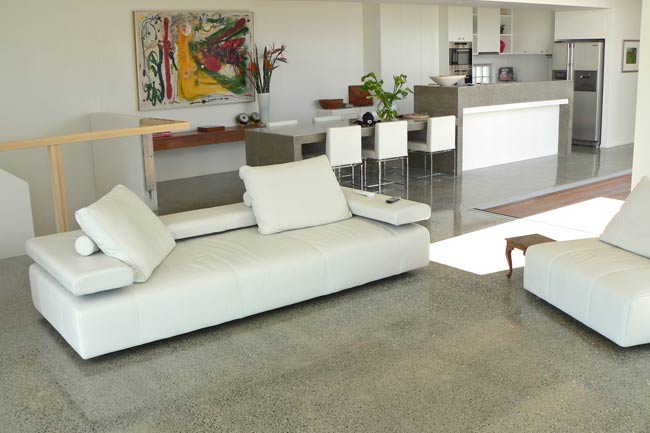In the past, the concrete floors were used exclusively in industrial plants, today they are part of normal houses.
There is a globally recognized opinion of concrete floors that it is a cold material for flooring. However, if you hire underfloor heating it will become an extremely good material and heat will be provided.
That is why more and more people are choosing concrete floors in residential areas.
Concrete is a material obtained by mixing sand (or gravel), cement and water. To get a nice, smooth surface, special machines (so-called “helicopters”) are required so that the floor can be sanded.
This procedure is carried out using diamond materials of different grain sizes, after which the rough concrete turns into a decorative floor.
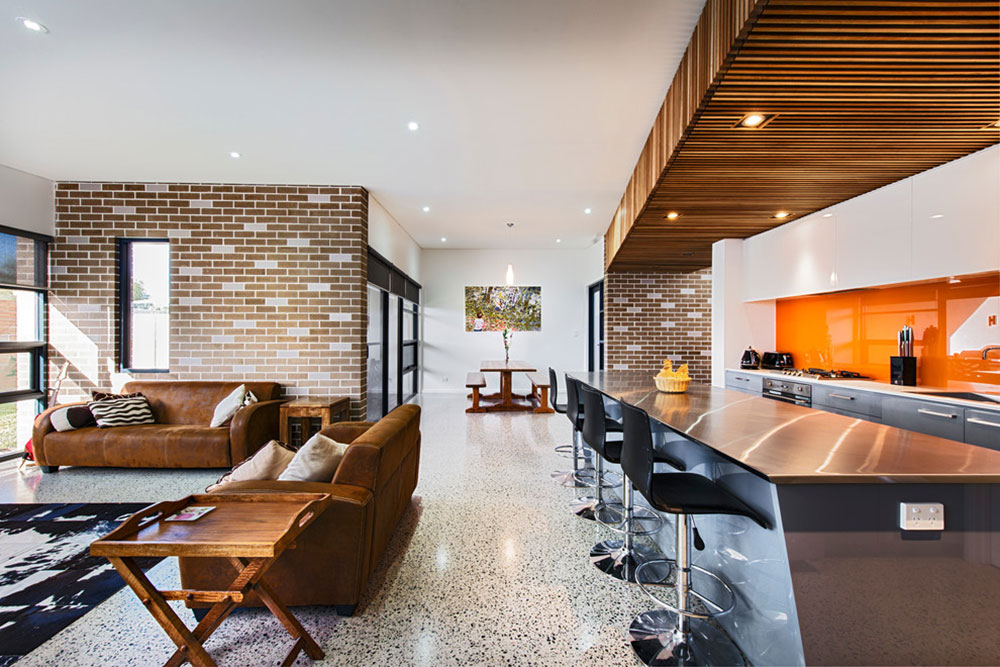 Image source: Swell Homes
Image source: Swell Homes
You will be amazed how beautiful and elegant the concrete floor will look.
Recently, more and more people are choosing to put concrete floors in residential homes as they are recommended by many designers and builders.
Concrete, or also known as cement floors with the right performance, will fit any home and their looks can be amazing.
But now you might be wondering what a polished concrete floor is.
It’s an ordinary concrete floor that has been polished with a special chemical compactor to fill in the holes that the concrete has. Then it is ground with special, finer grinding tools.
Benefits of polished concrete floors
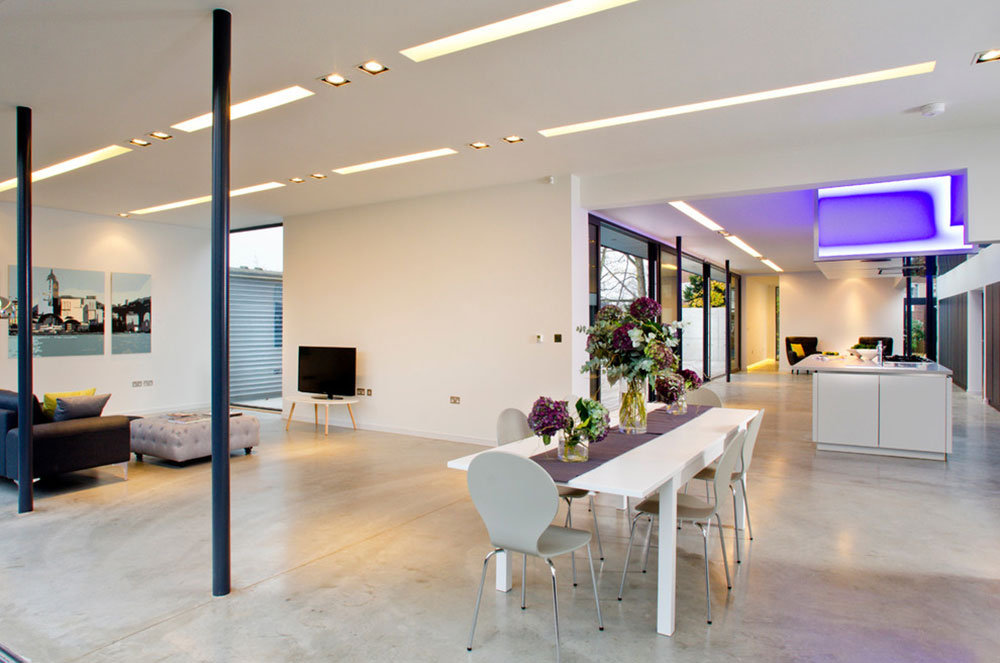 Image source: Warren House Construction Ltd.
Image source: Warren House Construction Ltd.
The advantage of concrete floors is that they are more resistant to damage such as scratches, furniture and objects that can fall on them, even against cars and other vehicles that might be in your living space.
In addition, a minimum of labor is required to maintain these floors. It is enough to just cover them with a protective layer once or twice a year, and that’s it.
Concrete floors are extremely durable. If you’re ever fed up with their style, you can always upgrade them to a new layer of a different flooring as the concrete will serve as the basis for laying new floors.
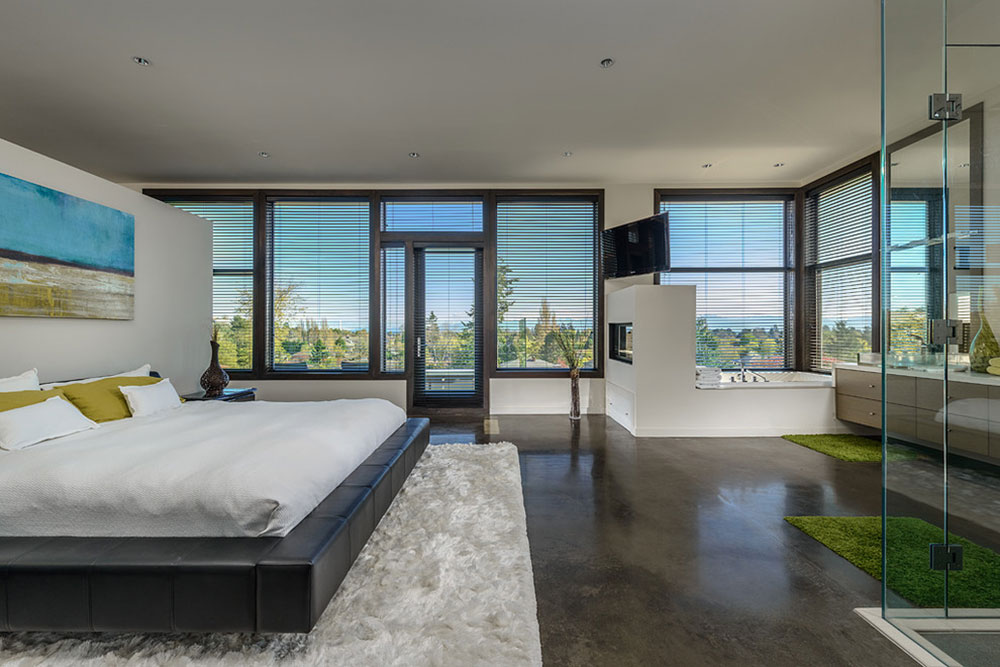 Image source: Joshua Lawrence Studios INC
Image source: Joshua Lawrence Studios INC
They come in many shapes and colors with different implementation methods and will easily fit into any home. Some of their advantages are:
- They look more beautiful and attractive
- They are resistant to the aggressive effects of chemicals
- resistant to mechanical damage
- waterproof
- constant abrasion
- have an extended service life
- have an area that is 8-10 times stronger than normal, untreated concrete
How are the concrete floors polished?
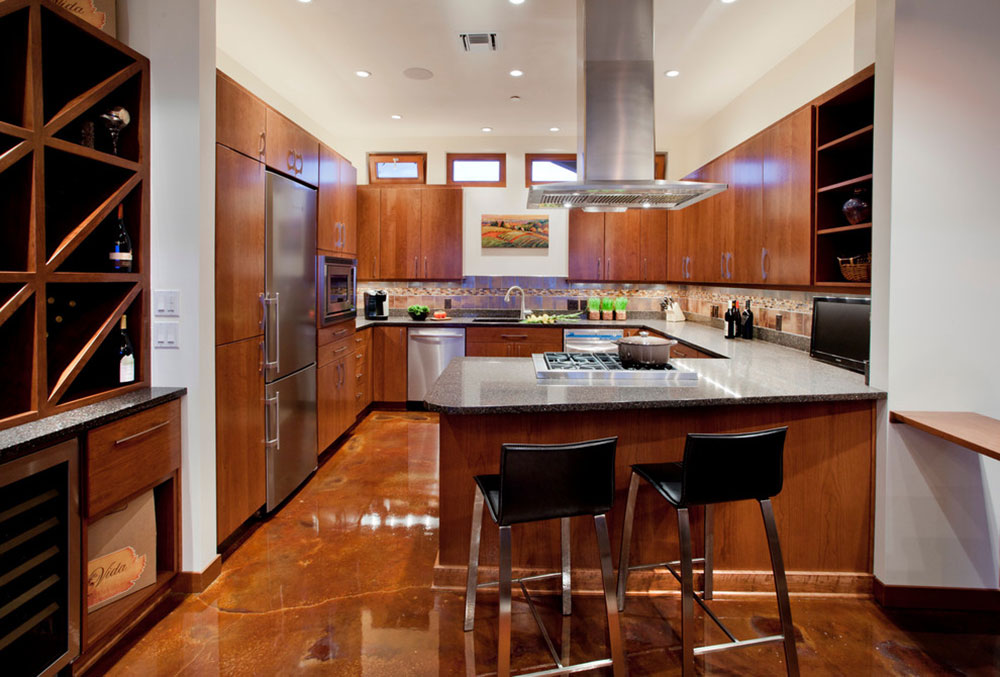 Image source: L. EvansDesignGroup, inc
Image source: L. EvansDesignGroup, inc
If you have concrete floors in the house, it doesn’t have to look dill or dirty. You can make them shiny by polishing them. You will need a grinder for polishing.
The sanding can be dry or wet, and during the process you can apply a variety of colors and patterns to the concrete floors for additional decoration.
The floors can also be sanded in different reflective shades depending on your wishes and needs.
Fine dust and harmful gases are generated during dry grinding. So, recently, wet grinding of concrete floors has been preferred.
Diagnose the condition of concrete
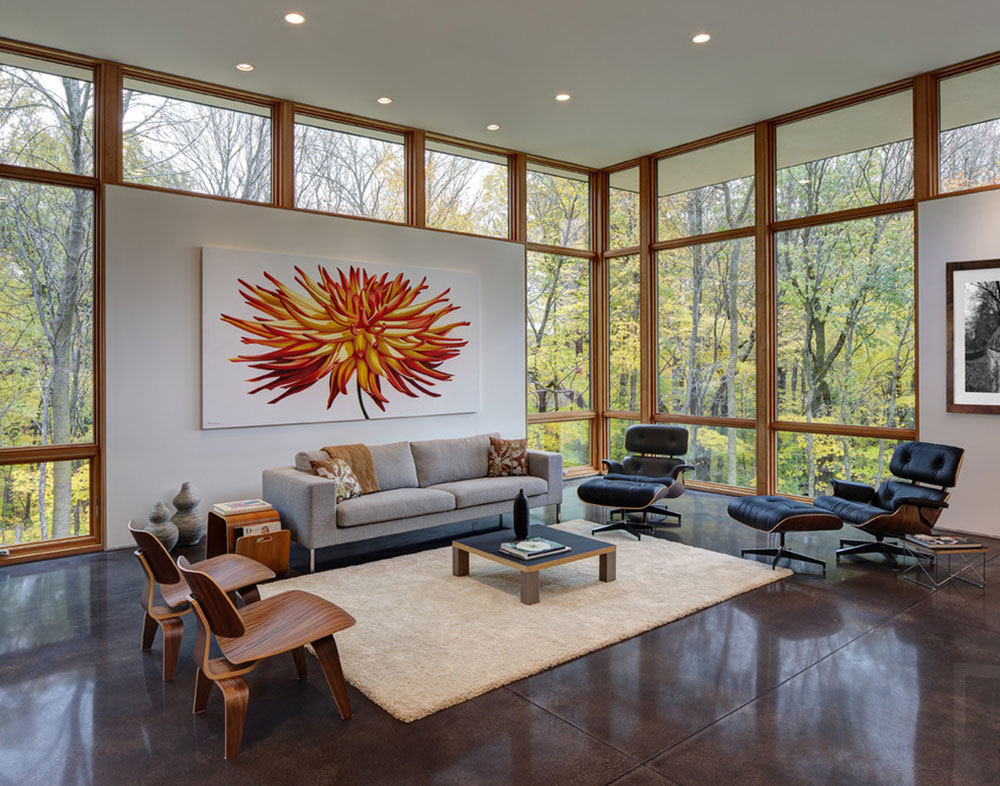 Image source: Bruns architecture
Image source: Bruns architecture
If you are planning on polishing your concrete floor, the first step in the process is to determine the condition of its surface.
The concrete consists of different elements of different hardness and density, which vary from region to region.
To determine the condition of the concrete, you need to measure its density and hardness. This can be done with the help of a MOHS concrete hardness tester.
It is very important that the concrete floor is compacted and polished to extend its lifespan to over 100 years.
Prepare the area to be polished
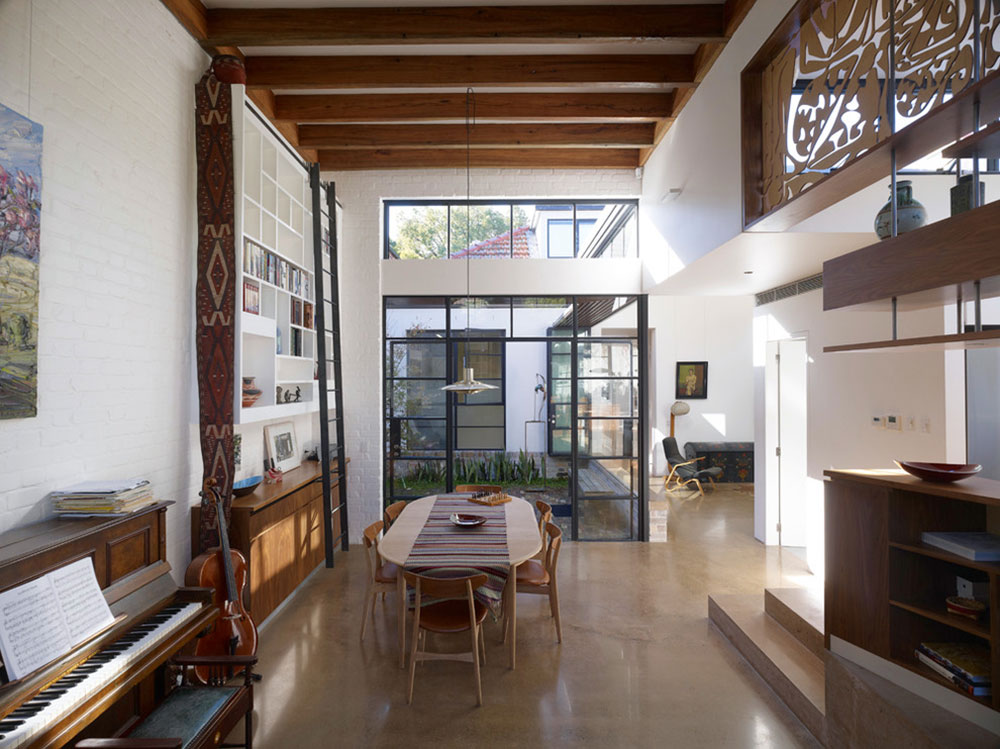 Image source: Sam Crawford Architects
Image source: Sam Crawford Architects
So now you know that every concrete floor needs to be polished to be shinier and to last longer. But before you start polishing, you need to prepare the floor for the procedure.
The amount of preparation required may vary depending on the condition of the floor. First of all, you need to clean the floor from any accumulated dust.
If you have additional coatings on the concrete, you will need to remove them. If the floor has some cracks, you need to reconstruct them.
Polishing method for concrete floors!
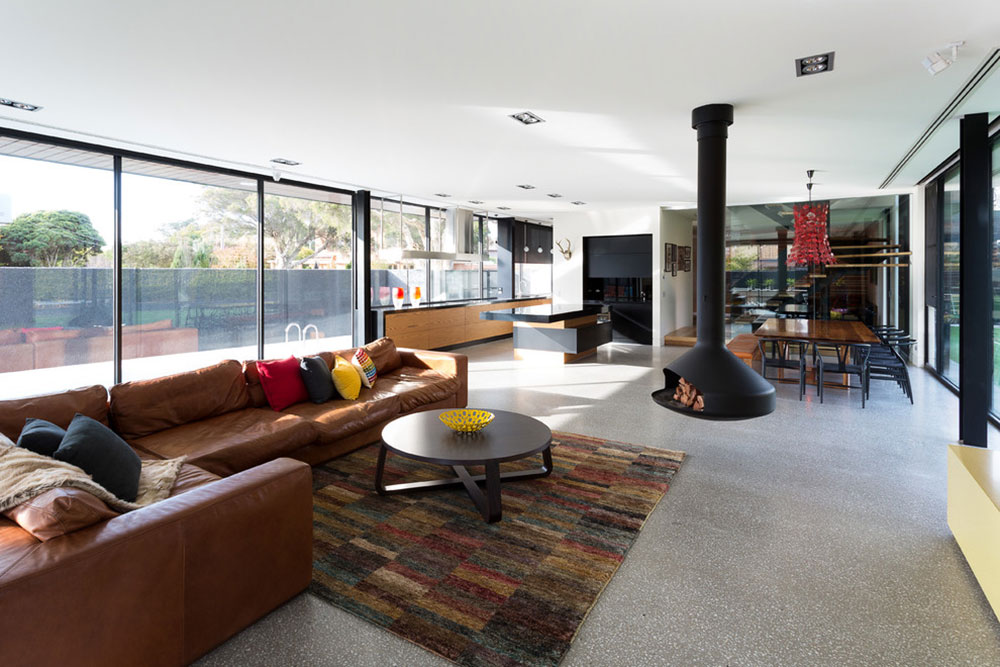 Image source: Jasmine McClelland Design
Image source: Jasmine McClelland Design
When the preparatory process is complete, it comes to polishing. As already said, the grinding is done with a coarse-grain grinding wheel with diamond abrasives.
Depending on the condition of the soil, you may need to repeat the process twice.
The process itself isn’t complicated. All you have to do is move the sander in a circular motion, making sure to cover every single piece of the floor.
After you are done, you will also need to buff with a fine-grain grinding wheel. This type of polishing gives the floor the desired silky look.
compression
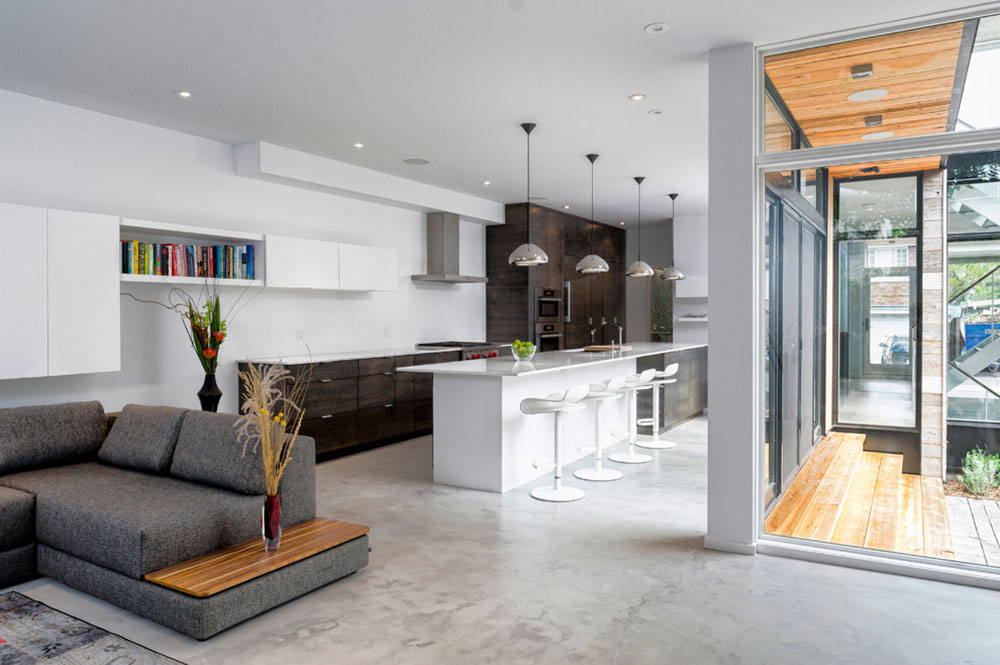 Image source: Christopher Simmonds architect
Image source: Christopher Simmonds architect
After grinding with coarse and fine grinding, the compression process takes place. When compacting, a chemical hardener is actually applied to the concrete, which serves as additional protection against scratches and water ingress.
Final act
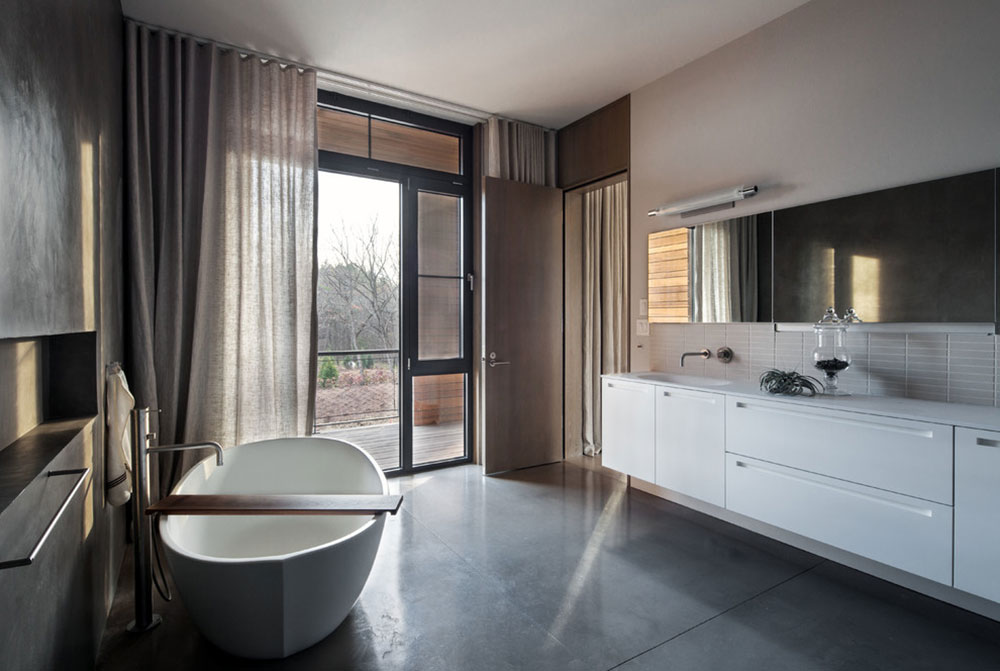 Image source: BWArchitects
Image source: BWArchitects
After you’ve created your newly polished floor, it’s time to apply a layer of concrete floor polish to create the final protective layer.
What does the concrete floor cost?
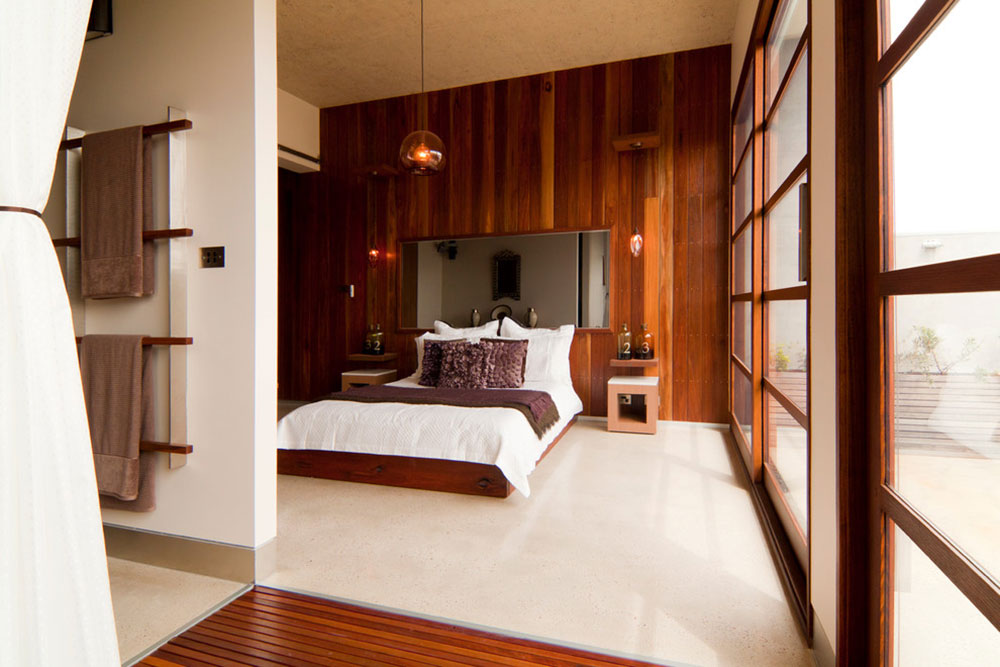 Image source: also CAN architects
Image source: also CAN architects
While the desire to cut costs and maximize profits is nothing new, changes in concrete technology could make the construction process leaner.
The natural heavy weight of the concrete has been minimized.
Reusable formwork systems, proprietary reinforcement, prefabrication of elements and the use of self-compacting concrete for congested or inaccessible areas have all contributed to the efficiency of concrete construction.
Why choose concrete floors?
Easy to clean and maintain
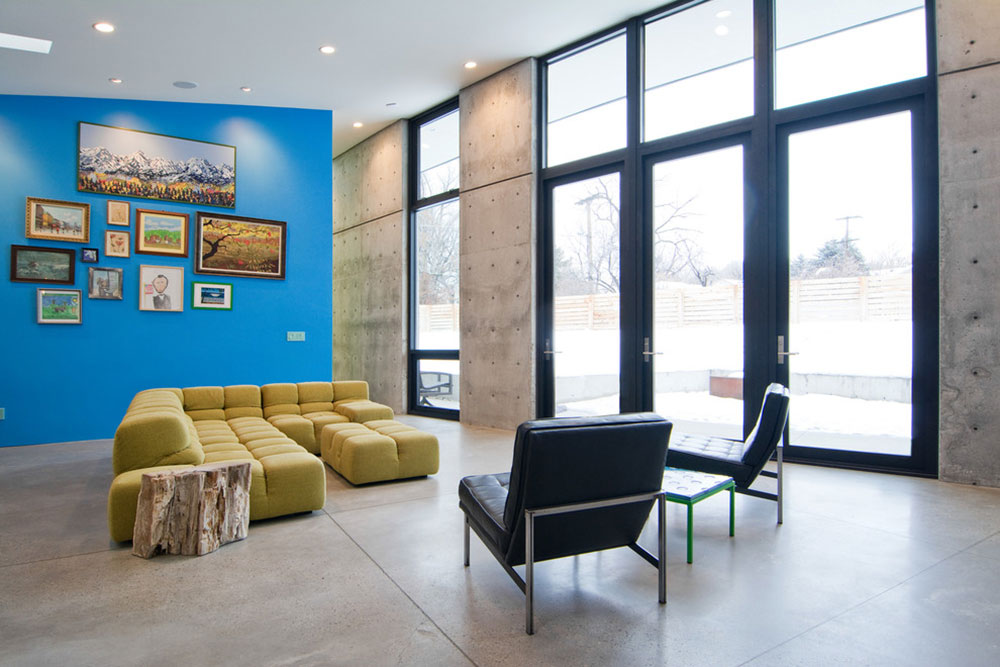 Image source: Lucy Call
Image source: Lucy Call
This type of floor is the easiest to maintain. Once you’ve placed and polished the floor, all that’s left is to wipe it down with a detergent and wipe it to remove any dust that has formed.
High durability
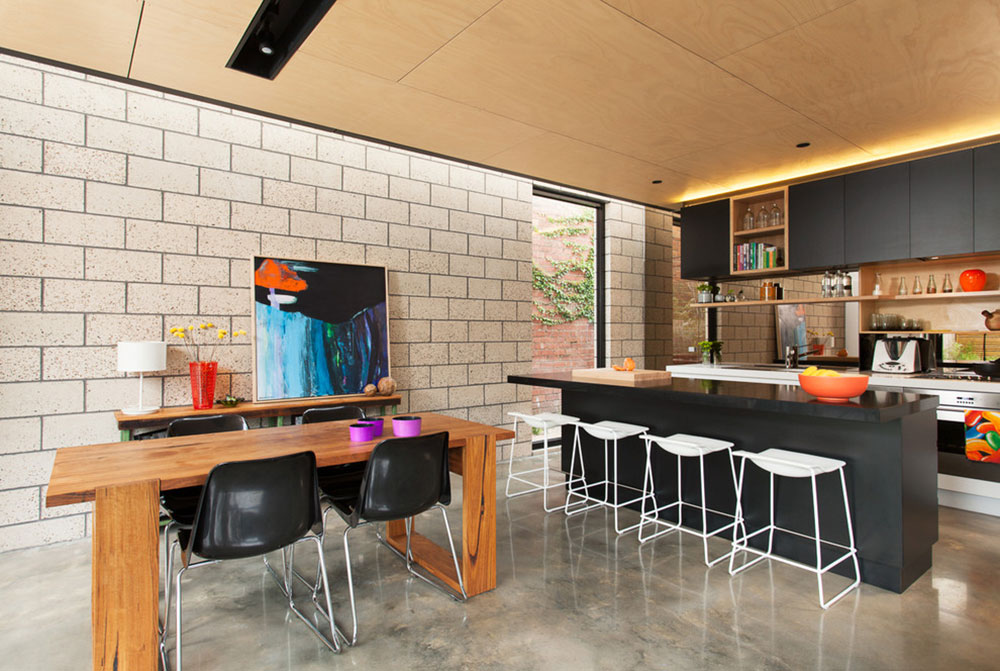 Image source: ArchiBlox
Image source: ArchiBlox
The poured concrete floors are durable, long-lasting structures that will not rust, rot, or burn.
The lifespan of concrete floors can be double or triple compared to other common building materials.
Economically
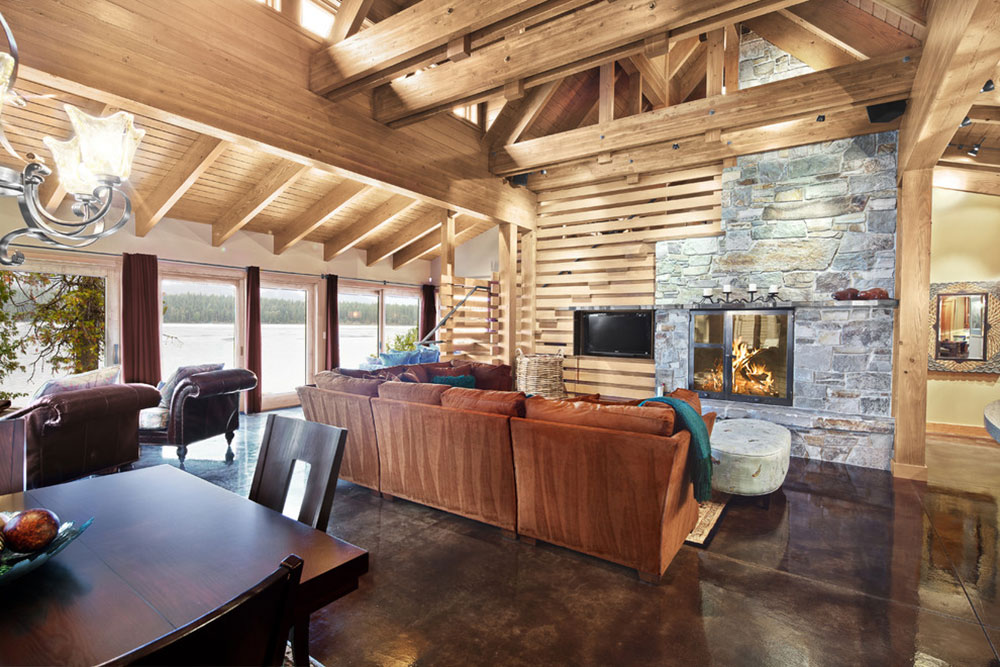 Image source: Gelotte Hommas architecture
Image source: Gelotte Hommas architecture
Because concrete is durable and lasts longer than many other building materials, it costs less to maintain. This means you can get a state-of-the-art floor for a small amount of money.
versatility
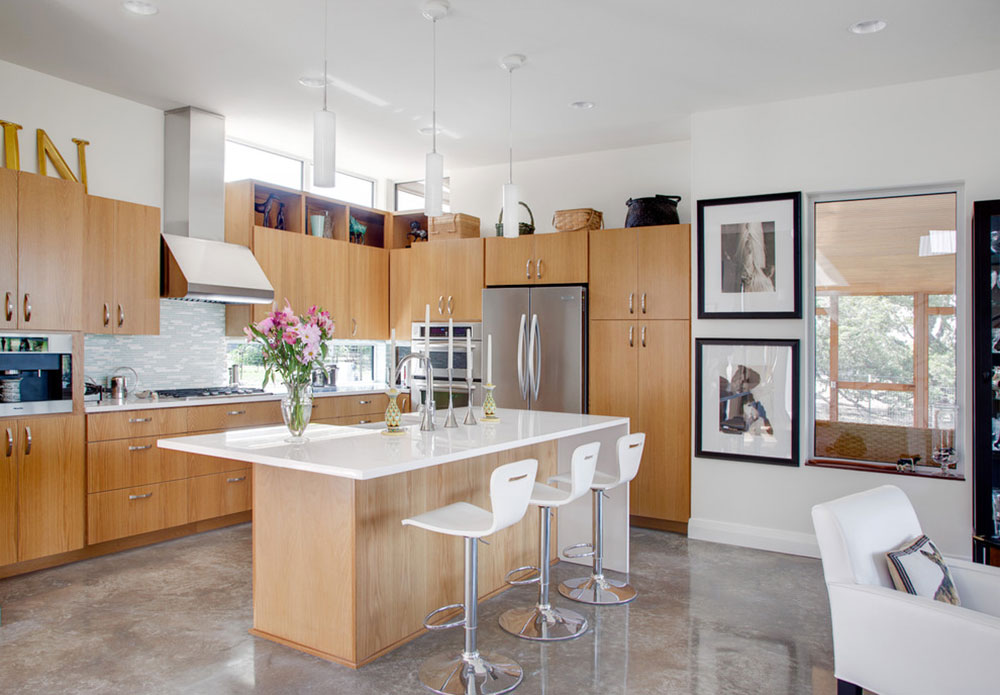 Image source: Kailey J. Flynn Photography
Image source: Kailey J. Flynn Photography
Concrete’s undisputed versatility has been a gift over the years to those responsible for marketing.
The concrete is versatile and allows for a variety of shapes and textures. It is also versatile in the flexibility of component materials.
This allows the resources used for production to be varied and also expands the range of performance and strength.
Not prone to damage
 Image source: Rodwin architecture
Image source: Rodwin architecture
The damage caused by moisture does not affect the polished cement floors.
Concrete is inherently permeable, but the degree of porosity varies widely and it is noteworthy that some of its most important early uses were in water-holding structures.
New floors versus retrofittable polished concrete floors
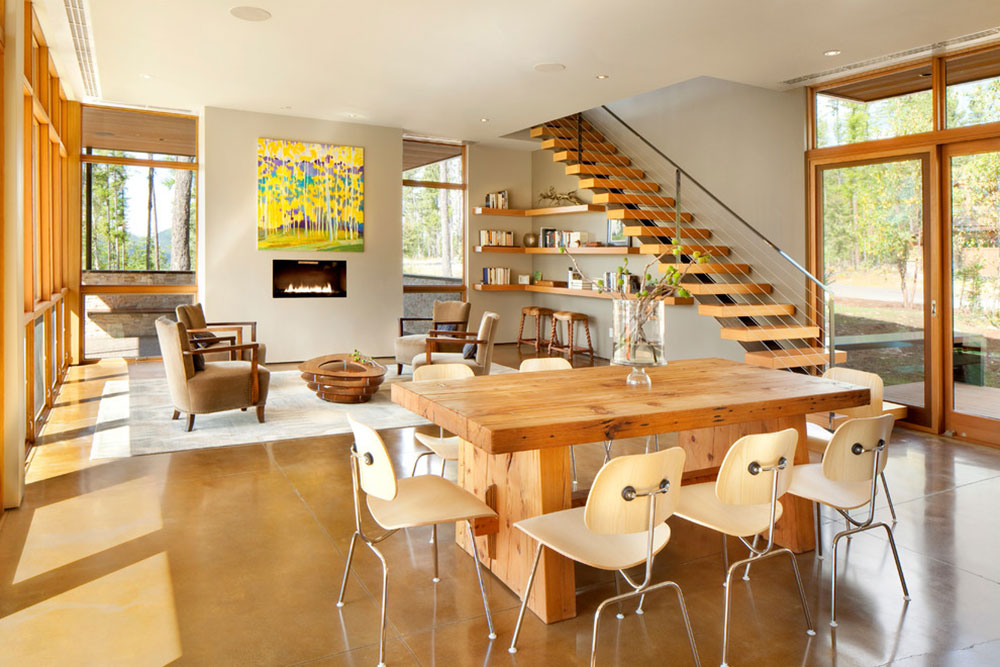 Image source: CTA Architects Engineers
Image source: CTA Architects Engineers
In the case of existing floors, you will be limited to the aggregate that is already present in the concrete. When polishing the concrete, the surface is slowly sanded to the desired gloss and smoothness.
The existing aggregate becomes the characteristic of the new surface. However, it is also possible to add a “cover plate” to an existing plate if a specific overall surface is desired.
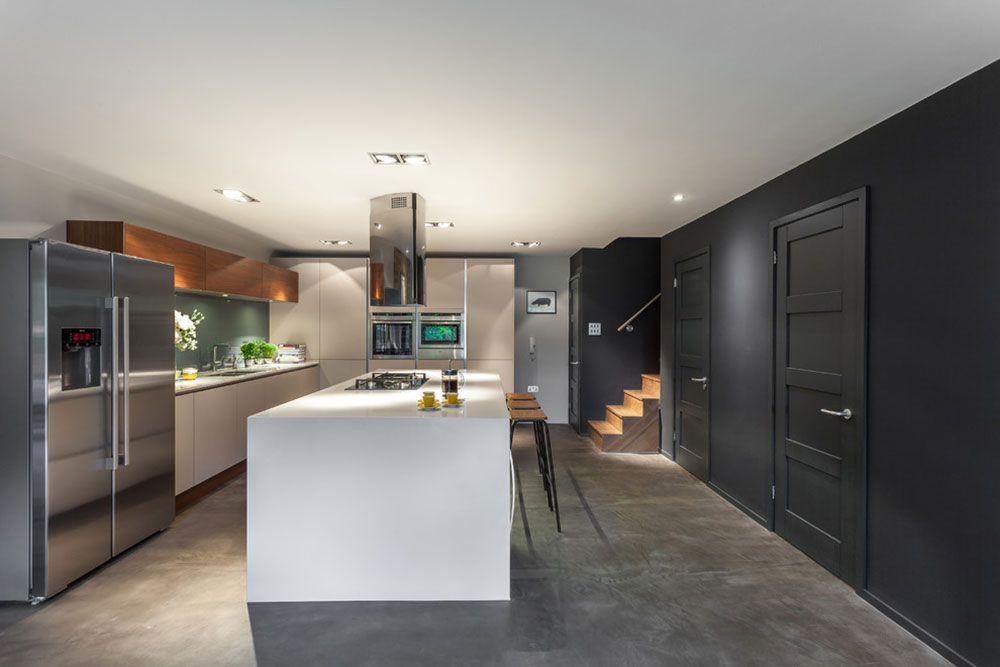 Image source: Casey & Fox
Image source: Casey & Fox
The minimum thickness required for this process is 50mm, which can affect the door and ceiling height.
However, when you are installing new floors, the situation is different. If you haven’t already poured your concrete slab, you have more options to customize the look of your polished concrete floor.
You can give the floor a decorative surface by adding decorative aggregates such as granite, seashells, glass … to the concrete.
 Flower Love
Flower Love
